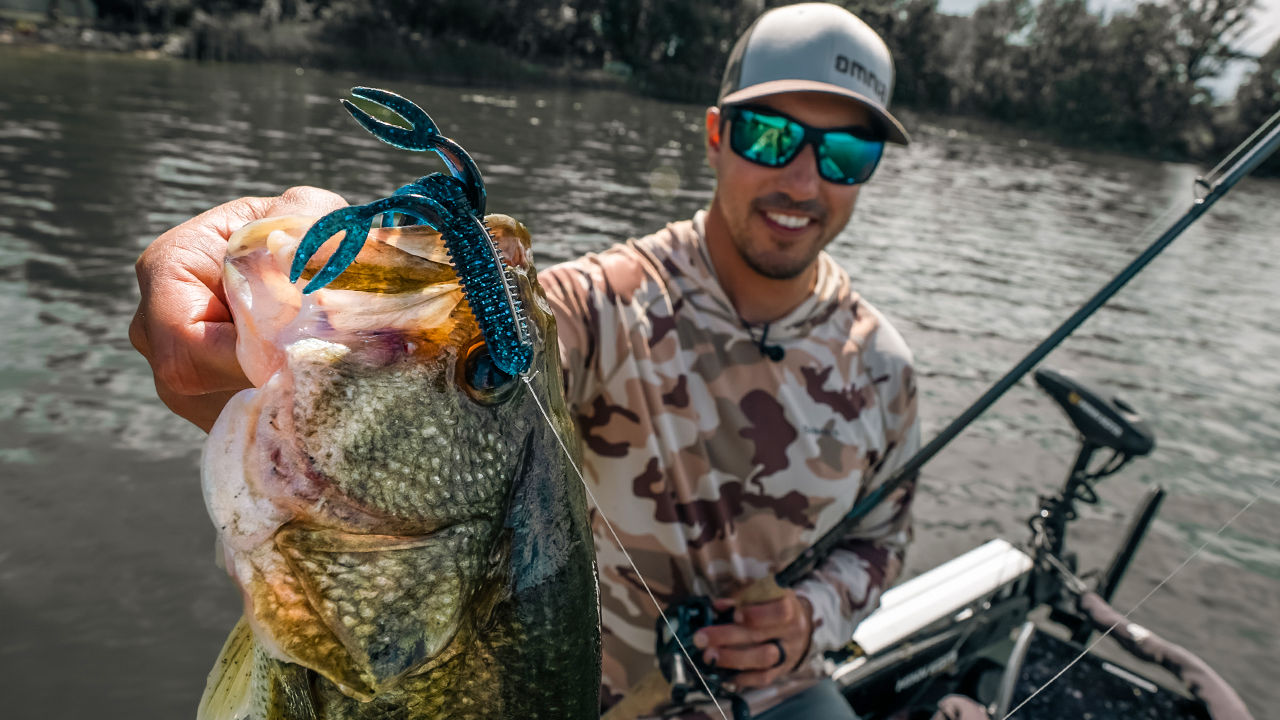Finding and catching bass in lakes filled with weeks (aka grass) can be challenging, but some basic knowledge coupled with modern fish finders and a weedless Texas rig leads to quick success. Pro bass angler Bob Downey explains how to locate key grass edges and find the best grass using a simple Texas-rigged tube setup.
Downey first stresses that finding fish requires patience and poking around. More often than not, bass bury in the cover where they weight in ambush. They don’t usually stand out on forward-facing sonar, so you need to fish around to find them. Modern sonar technologies like 360 Imaging and forward-facing sonar clearly show and define important attributes of grass so you can make informed casts and replicate success.
TACKLE USED (retail links)
- HOOK – VMC Ike Approved Heavy Duty Wide Gap Hook, 4/0
- PLASTIC – Big Bite Baits 4″ Craw Tube, color – Black Blue/Electric Blue
- WEIGHT – VMC Tungsten Worm Weight, 1/4-ounce
- ROD – St. Croix Avid Series Casting Rod (AVC70MHF – unavailable)
- ROD (alternative) – St. Croix Victory Casting Rods, 7’1” Medium-Heavy Fast
- REEL – Daiwa Tatula Elite, 8.1:1
- LINE – Sufix Advance Fluorocarbon, 17- or 20-pound
While MEGA 360 paints a clear image of the grass (density, distance, direction), MEGA Live adds additional information such as grass height, density, and holes. It’s your job to break down complex and expansive grass beds fast and pattern what the bass are relating to — catch a fish, look for similar cover with your eyes and fish finders, repeat. A pattern can become quickly apparent.
It’s hard to beat a light Texas-rigged plastic in heavy grass such as coontail and milfoil. Downey makes long casts and allows the Texas rig to settle in the weed stalks. He then pulls the bait from the grass and drops it back down into the limbs and stalks. Think of it as stroking a jig, only it’s a Texas rig, and your bottom is the plant itself. Bass can’t resist a mouthful of tube slithering through the grass in this manner. If the Texas rig bite fizzles, Downey pivots to a Neko rig, drop shot, or Ned rig to catch a few more.
Focus your casts around holes, pockets, or points, as they’re prime ambush zones. Good spots are often nondescript for most anglers, so you usually have the fish to yourself once you locate a school. Downey favors a medium-heavy power rod equipped with a fast reel and fluorocarbon line, as he feels the measured rod power and action coupled with line stretch keeps fish hooked better than a stiff rod or braid setup.
BOAT & ELECTRONICS
- LIVE SONAR – Humminbird MEGA Live Transducer
- 360 SONAR – Humminbird MEGA 360 Imaging
- FISH FINDER – Humminbird HELIX 12 MEGA SI+ G4N
- BOAT – Bass Cat Eyra
- TROLLING MOTOR – Minn Kota Ultrex MSI+, 52”, 36v (112 lbs)
- MAPPING – Humminbird LakeMaster Plus Digital Chart, Minnesota V4












